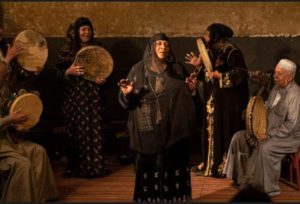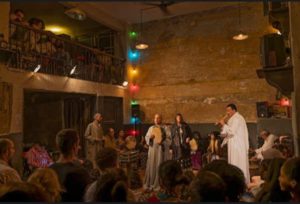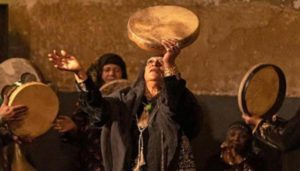Zar
Zar is a ritual ceremony to protect and rid human from the evil spirits. There are different speculations for the meaning of the word Zar. In Arabic it means “to visit”, in reference to visits by the spirits to human beings. But the same word in Amharic language spoken in Ethiopia and Eritria (where the original ritual is thought to have originated) means ‘serenity’ or ‘peace’.
Zar could be considered a psychotherapy ritual that relieves those tensions through a kind of rhythmic movement and dance. The Zar is a form of performing art through dancing which is accompanied by loud powerful beats from drums and duff along with Tamboura and Mnjur musical instruments. The group responsible for organizing the Zar, singing and drumming, are mainly women. Their leader is known as “Koudia”. Also, the person to be rid of the spirit is usually a female. A ceremonial meal to please the “masters” or the spirits is held. Often an animal is slaughtered and the animal’s blood is used to grease parts of the lady’s body.
The Koudia leads the rituals and determines the tones of the Zar according to the type of master who possesses and affects the patient (Sudanese, Turkish, Moroccan..etc.). Each song calls a certain beat to suit the master, the music changes until the patient vibrates with the rhythm. There are various clothes (like Tarboush) and accessories and specific jewelry (like a square ring, a domed ring, a hijab made of silver) known as Zar jewelry that is to be worn by the patient (usually a woman) according to the master to satisfy him and to protect herself from his harm and evil. Zar music is very characteristic that it is inspired artists to include it in theatre performances.
Both Muslims and Christian Egyptians practice Zar, though with some differences. Some of the names of the Zar dances are: el-Hikimbashy, el-Yawarbia, el-Dier, Abu el-Ghiet, Sultan Yamama, Om al-Gholam, Abu Danfah, Daqet el-Arab, Daqet el-Sayeda, el-Baharia, el-Maghreby, el-Khaly, and el-Kharsa.




